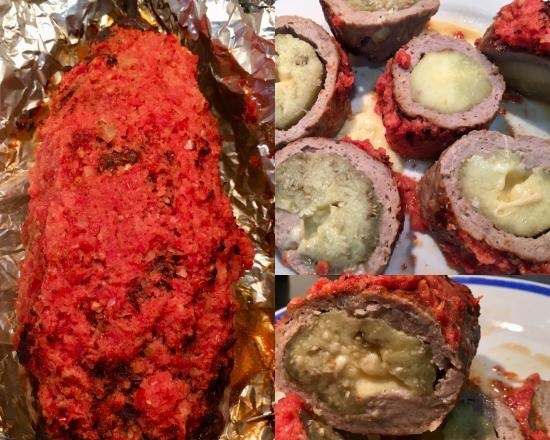|

The whole family decided to have a dog. And even the grandmother succumbed to the persuasion of her grandson. But there are a great variety of dog breeds, some decorative about 50. Which one to choose?
Men, of course, like big and strong dogs. For example, the German (East European) Shepherd Dog. They are excellent watchmen, unpretentious and easy to train. Or take St. Bernard. With such a "calf" next to you you feel confident. Women still prefer smaller dogs. And this is reasonable. After all, they need a dog that they can handle. It should be noted that children will have to walk the dog too. Will they be able to do without the help of adults, taking care of a large dog? A well-trained animal, as a rule, does not cause much trouble. But there are different circumstances. And the phlegmatic St. Bernard may not stand it and rush to sort things out with some mongrel.
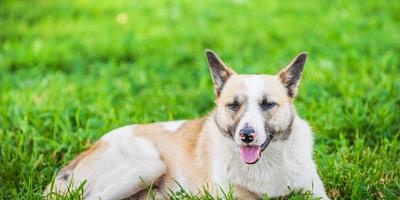
Before purchasing a puppy, you should think about why you are getting a dog. It is one thing if, in addition to everything else, you need a watchman, a reliable guard. Or maybe there have been no small children in the family for quite a long time, and you missed taking care of the little ones, you wanted to have a faithful friend who would not cause too much trouble.
Man is a friend of a dog!
You also need to consider your housing options. Will not the family be cramped after a new creature appears, which also needs its own living space. In short, if you want to have a dog that will not get bored with both the child and you, you need to think over everything in advance.
A dog's behavior is largely dependent on upbringing. Her family environment also affects her. In friendly families, where they don't get nervous, they don't scream, and the dog is less nervous and aggressive. And only if the family has a strong male hand, you can get a large dog. Recently, medium-sized dogs have been popular in cities - Airedale Terriers and Scottish Shepherd Dogs (collies).
Airedale terriers are strong, agile and cheerful dogs. They are very friendly in the family and quickly become everyone's favorites. After all, the only question is that the dog is not too spoiled. In training, Airedale terriers can be quite stubborn at first. But they remember for a long time what they were taught. They give serious trouble in only one thing. They are not clipped or combed like other dogs, but plucked (trimmed). But in small towns it is difficult to find trimming specialists, and where they are, their services are quite expensive.
Collies are considered to be the most beautiful service dogs. They are, perhaps, the most benevolent creatures and "work" in the family almost as nannies. Moreover, they are sensitive and vigilant watchmen, capable, with good training, of bold deeds. The only trouble with them in the house is because of the long thick wool. During the molting that occurs in collies, like almost all dogs, 2 times a year, I will not save from wool in the apartment. The solution is to regularly comb the dogs. But you will have a lot of great wool. And to the envy of others, you can walk in fluffy and soft knitted things. Thanks to its natural coat, the collie is very cold-tolerant and can be kept outdoors.
From a large family of decorative dogs, poodles have recently become very popular. They are divided into three groups: large, small and dwarf. They are curly and corded. And what kind of poodles do not have colors: black, white, anthracite, blue, brown, chocolate and even apricot. And if the family decided to have a decorative dog, a poodle, I think, can satisfy every taste: These cheerful and playful creatures can be more than just a decorative decoration for your environment. They are excellent watchmen and hunters.Most of them successfully pass the tests under the General Comprehensive Training (OKD) program. We also have poodles in our country that have I degree in protection and guard service (ZKS).
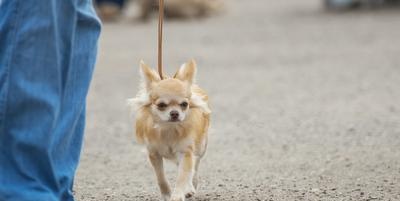
We talked about these breeds not at all so that in your choice you would stop on them. Each breed has its own advantages and disadvantages. And before you get a dog, you need to know as much as possible about it. So that there are no unexpected features for you, for example, the beautiful Irish Terriers - everyone is good with a dog, but many of them are incorrigible bully. Scottish Terriers are distrustful of children if they are not taught to them from childhood. And French Bulldogs snore in their sleep - a small sin, but perhaps especially unpleasant to you. Unfortunately, we don't have much literature about dogs. For advice, we recommend contacting a kennel club. There are about 150 of them in the country. It is more desirable to acquire a puppy through clubs. Most likely, you will have to pay more for it. But you will get a puppy with a pedigree. And the point is not that some kind of "background" will be marked in it. A proven pedigree is the weight, almost a guarantee that you will get the dog that I want in terms of the exterior (appearance), and the character, habits.
But what if such a situation arises? A daughter or son asks and asks to get a dog. You seem to agree to this, but at the same time you are not doing anything. And then one evening, coming home from work, you find in the apartment a kind of lop-eared creature, trustingly wagging its tail. How to proceed?
What breed of dog to get?
Do not rush to scold the child for a rash act. Maybe you yourself are to blame for it: your indecision and pushed him? And in any case, you can be proud of your child, who took pity on a homeless puppy or kitten. Do not destroy in him this nascent ability to worry about another.
Yes, but what to do with the puppy, not to drive it out into the street? First of all, you need to feed him and give him a bed. And then calmly discuss the situation with everyone together. And if, for some reason, it is still undesirable to have an animal in the family, one must be able to explain this to the child, together with him to come to this conclusion. And then try to find a new owner for the puppy. It is easier to do it in a big city, more difficult, of course, in a small one. We'll have to do persistent searches. During this time, while you are looking for an owner for him, the puppy will be fed, it will no longer look like a wretch, you will wash it. It is easier for such a handsome man to find an owner. Many people who want to get a dog, especially older people, do not need its pedigree at all. They need a loyal friend. And among the mongrels who have experienced all the "delights" of a homeless life, you can find such a grateful friend. In addition, mongrel dogs, unlike their purebred brethren, do not resemble one another. So the owner of the pooch can also be envied - he has a friend of original appearance.
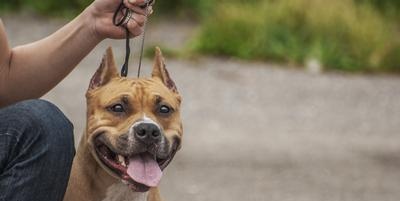
Unfortunately, some of the mongrels are too shy. Affectionate handling and persistent special training can smooth out this deficiency. Taken into the house by adults, stray dogs can run away during walks - they are used to being free. Many of them find it difficult to get rid of the habit of grabbing from the ground what they consider tasty. However, many well-groomed dogs suffer from similar shortcomings in education. The "medicine" for both is the same - good and persistent training.
Cleanliness training
Mom herself takes care of the cleanliness of her puppy. She is the first and teaches him the lessons of purity. So by the time the puppies can be fed, which means they can be given to their new owners, they learn to do their "business" outside of their nest. As a rule, the puppy finds several places for them, where his scent then remains. This is what you need to use.
Try this way.
Attentive owners notice when the puppy "needs". As soon as he starts, bending, spinning in one place, slip a newspaper under him.Then do not throw it away, but put it on a plastic pallet or plywood sheet prepared in advance. Take the puppy to it every two hours. The newspapers, of course, will have to be replaced. But the smell will still remain. It will be the "starting" signal for the puppy. The pallet can be gradually moved towards the exit door and then taken out.
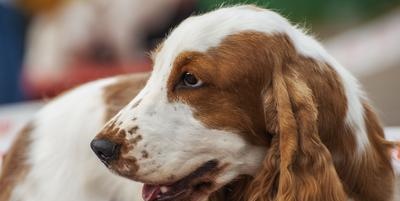
If you follow the puppy's feeding and sleeping regimen and by petting you encourage his correct behavior, then after 2-3 months you will not have much trouble with “this”.
You can't poke a puppy into his own puddle, as some do. He will simply be afraid of you. You can have an older puppy, when he has already learned to ask to go outside, to scold him for bad behavior. The puppy will perfectly understand that you are unhappy with it even without beating.
If a puppy lives on your street, this does not mean that he can do his toilet wherever he pleases. It is unhygienic for him and for you. Equip a pallet, a low sand box. It needs to be cleaned periodically. But do not disinfect so as not to fight off the smell. Otherwise, the puppy will choose another place.
First dog
Already a two-month-old puppy, if properly walked in the evening, can endure the whole night. In the morning, as a rule, at the same time he “needs” to go outside. And as much as you would like to soak up extra minutes in bed, do not hesitate to quickly go for a walk with the puppy. Skip the moment, he will do you "business". In addition, he will not develop a clear habit of using the toilet in the morning only on the street.
But in the early walks with the dog - a lot of advantages. They teach to get up quickly in the morning, to start the day with a walk in any weather. It can be combined with physical exercises. While your dog is going about his "business", you will have time to do 5-6 exercises, make a light jog. Some people have dogs for this purpose - so that there is someone to do exercises with in the morning.
The confusion with the toilet in the house can happen to the most educated dog. Do not rush to scold her. Most often, it is caused by some kind of illness, perhaps due to the old age of the dog. And diseases, as you know, are not treated with reprimands.
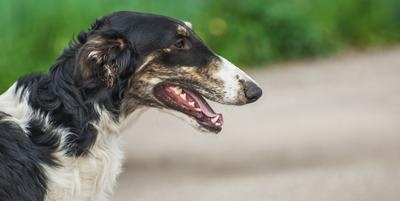
Dog training
Most suitable for training are dogs aged 9-10 months. By this time, they have become physically and mentally stronger, their reaction becomes more stable.
It is better to train dogs in groups at the sports and training grounds of clubs under the guidance of experienced instructors. But if there is no such site in your city or village, then you will have to train yourself, choosing a large enough site for this.
Try to get special literature in advance. Information on how to train dogs can be found, for example, in the issues of the collection "Service Dog Breeding Club" of the DOSAAF Publishing House. It would be good to consult an experienced dog breeder or dog owner, at least the one from whom you took the puppy. And as far as he knows, it can be seen from the behavior of his dog.
And no matter how difficult it may be, try to train your dog to follow the most necessary rules. They were invented by people to make life easier for a dog in a human society. An untrained dog sometimes risks his life. How many pets died under the wheels of cars just because the owners did not teach them to obey the commands "near" or "stand".
The upbringing of a puppy begins almost immediately, as soon as he appears in the family. Perhaps the most important thing here is the understanding that this is not a mechanism that is obliged to obey your commands unconditionally. Each dog has its own character and its own ideas about its merits and strength. Strong and aggressive dogs know their worth and prefer, obeying orders, nevertheless to see in the owner, rather, an older friend or companion. Even affectionate dogs like poodles prefer to feel independent. And many hunting dogs, such as dachshunds. Hard education will only spoil them. And remember, punishing a puppy after a misdemeanor is useless and even harmful.The puppy simply will not understand why he was offended. As a result, he may develop a fear of the owner. With a thoughtful, patient and welcoming attitude you can get more out of your dog.
Naturally, the puppy is raised in one way or another by everyone who lives in the house. Grandmother forbids him to enter her room. Mom feeds in the morning and evening, accustoming to the routine and certain food. And if someone from the family feeds the puppy from the table during dinner, then he teaches the dog to beg and refuse the food put to him. And even puppies quickly learn to "play" on the contradictory actions of their owners, of course, in their favor. Therefore, in raising them, it is important for the educators themselves to agree on the rules common to everyone in the family. And at the same time, keep in mind the main thing: what an adult dog should not do, the puppy should not be allowed. For example, my daughter wanted to take such a small and cute puppy to her bed. Imagine that in six months a kind of hefty dog will be attached every night in the already familiar place.
Dog training should be done by the one who is the most important owner of the family. Most often it is the father. Children, depending on the breed of the dog, can also train their pet on their own. But first, think together: will a 10-year-old daughter, for example, be able to cope with a boxer or a shepherd dog? Unlikely. Therefore, large dogs need to be raised by children with the help of adults. One way or another, do not deprive them of this pleasure. Teaching a dog together with adults, they themselves learn a lot. Moreover, a significant part of the daily walks with your pet, as you agreed in advance, should be carried out by him. And, therefore, the dog must obey the youngest in the family.
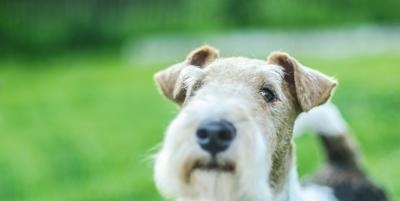
What is your dog's name
Puppies, as a rule, quickly remember their nickname - name. While accustoming to it, caress the puppy, treat it to tasty. Say his name when you bring him to a bowl of food.
Try to find a name for your new friend that is resonant and not too common. When doing this, consider how it will sound. For example, the formidable Argus turns into "arbus" when pronounced, and the beautiful Joy - into "joe". The dog, of course, doesn't care. But its owner will be annoyed if the guys from the yard of his noble dog begin to tease with Watermelon.
When calling a dog by name, try not to use derivatives from it, especially during training. Some owners call, for example, Dzhulbars Dzhuly, Dzhulechka, Dzhu, Bars, Barsik. It confuses the dog.
Place command
With this command, the upbringing of the puppy begins as soon as he appears in your family. From the first time, referring him to sleep in the designated place, say: "Place, place." The command is also given when the puppy is subsequently sent to him on his own initiative. Puppies quickly understand what is required of them. And if your dog is used to going on command to his place, then it will not be difficult for him to master this technique.
To start out-of-home training, leaving a grown puppy on the street, for example, near a store, be sure to tie it up, put something of your own next to it and give the command “place”.
Fighting dogs in our home
During the exercises, put on the ground, for example, a glove, behind it, lay the dog with a collar and on a short leash, ordering: "Lie down, place." Move two or three steps away from her and after a pause call the dog to you. Then, after waiting a few seconds, command “place” by pointing with your hand and taking a step in the direction of the thing you left behind. When the dog comes up to it, command to lie down. After completing the command, reward her with a treat and affection.
On a short leash, you need to practice until the dog learns to clearly follow the command. Then get it done on a long leash. At the third stage, the long leash is thrown to the ground, and then the collar is also detached. Other commands are practiced in approximately the same way: “to me”, “sit”, “lie down”, “stand”, “beside”, etc.
Muzzle training
A dog is not supposed to appear in public without a muzzle. For his absence, they can be fined. Of course, not all dogs need it, but only vicious and nervous nippers. Other dogs could easily do without him. But all of them need it for their own and master's peace.
Already puppies are taught to muzzle. The muzzle needs to be chosen in size and not in any way for growth. Then I'll have to buy a grown puppy and a bigger muzzle. But it is much more difficult to accustom an older dog to it. The most comfortable "deaf" muzzles are made of leather and wire. In them, the dog can open its mouth, which it just needs in the heat.
When training, put a treat in the muzzle, put it on the puppy for a few seconds, try to distract him. After a while, repeat, and so on.

Feeding the dogs
The amount of feed depends on the quality of the food, the age of the dog and its appetite. The dog should be given as much food as it needs. And this is evident from the animal itself. If the dog becomes fat, the portion is reduced, the amount of carbohydrates is reduced and the proportion of vegetables is increased.
Food should not be given to the dog hot or cold. It is advisable to give unprocessed foods - meat, vegetables, fruits. Old American recipe: Add chopped tomatoes or raw tomato juice without salt to food 3 times a week. Thanks to this, the dog will not form a stone on the teeth.
After feeding, the bowl should be washed and removed until next time.
The dog is a predator. Therefore, its main food is meat. Its systematic absence affects the health and constitution of the dog. Good protein and fish (don't forget to choose bones from it!).
Of the carbohydrates, it is preferable to give the dog rich in trace elements and cheap rolled oats. Rice is expensive and poor in vitamins. Excessive use can cause eczema in dogs. Fine flour products and potatoes are undesirable in feeding.
If the animal is fed using a variety of foods, mineral supplements are not required. In winter, the dog is given a multivitamin.
Make sure that there is always clean water in the bowl. Animals kept in apartments with steam heating drink especially often.
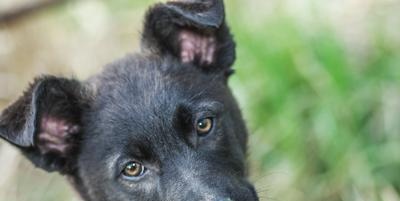
It is interesting:
The dog has no color vision. She sees the world around her only in black and white. In general, the dog is short-sighted, she sees no further than 600 m (this is due to the peculiarities of the structure of her eye). Apart from humans, only monkeys have color vision.
Why are cats feuding with dogs? From a misunderstanding of each other, one might say, through an annoying misunderstanding. Both animals express their feelings with the tail. But in a dog, a tail raised up means anger or threat, and a tail down and moving from left to right means pleasure. And the cat is the opposite. Hence the enmity for life! However, this eternal enmity does not extend to kittens and puppies.
Sashina E.Yu. The ABC of Home Economics
|








